Why Donald Trump seems to be in trouble in the US Midwest
The COVID-19 pandemic, police violence and personal appeal are all strengthening Joe Biden in the US Midwest
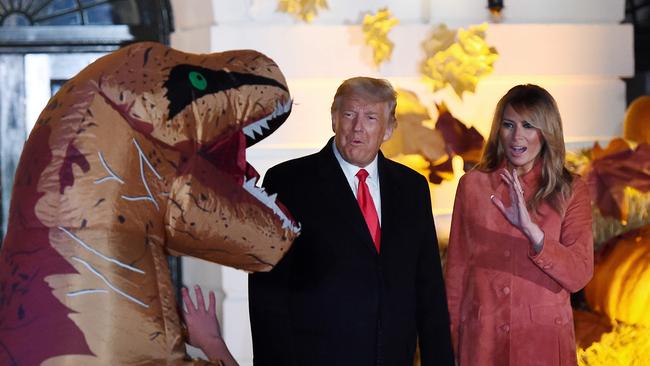
Crammed together by their thousands, those at Donald Trump’s rally on Sunday (AEDT) at an airfield in Waukesha, near Milwaukee, roared in appreciation of his show.
Never mind the pandemic, which is hitting the Midwest and its battleground states with ferocity in the closing stages of the campaign. The “China plague”, as he calls it, “It’s going away, it’s rounding the turn.”
His fans in Wisconsin have frequent chances to see him. If Sunday’s event didn’t sate them, then they can attend another in West Salem, farther west, on Tuesday. That will be Mr Trump’s third rally in Wisconsin in less than two weeks. He might squeeze in another before polling day on November 3. Mr Trump believes in the rousing power of his rallies in closing a campaign.
On the day of his appearance in Waukesha he had already addressed similar events in North Carolina and Ohio. A day later he was in New Hampshire and Maine. In 2016 such end-of-campaign events fired up supporters in three Midwestern states — Michigan, Pennsylvania and Wisconsin — where his narrow victories delivered the electoral college, and the presidency, even though he had lost the popular vote. He relishes energising crowds, cracking jokes, dancing as speakers blast music and riffing away from any planned speech. Associated television coverage doesn’t hurt either.
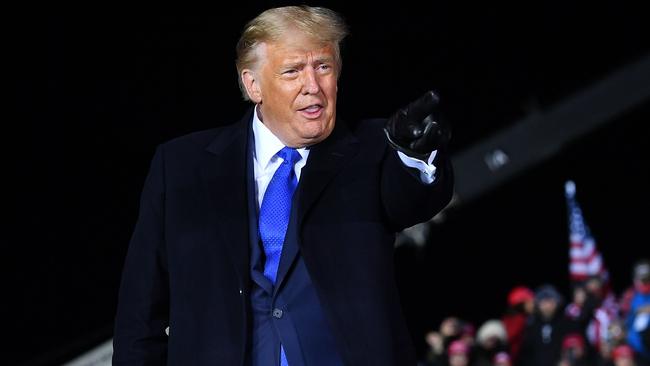
Biden’s drive-in rallies stall
His staff claim the showman draws independent voters or curious waverers, not only his most dedicated base. In contrast the rarer Democratic public events, where social distancing is respected, can seem underwhelming.
Barack Obama, on Joe Biden’s behalf, addressed a “drive-in” rally in Pennsylvania last week. The plaintive sound of drivers honking horns — it sounded like a traffic jam, not a rally — was no match for the collective roar of human voices.
Yet rallies seem unlikely to help Mr Trump this time around. His prospects in the Midwest look far less rosy than before. Across the region, Mr Biden has consistently enjoyed higher polling than Hillary Clinton did in 2016. (Our forecast model, based on polls and more, estimates that Mr Biden has a two-percentage point advantage over Mrs Clinton’s record for each of Michigan, Pennsylvania and Wisconsin).
More important, he solidly outperforms Mr Trump. Our forecast model gives the Democrat a greater than 90 per cent chance of winning in all three states. In Pennsylvania it is 88 per cent. Mr Biden even has a fighting chance of nabbing two other Midwestern states, Iowa and Ohio, that Mr Trump took comfortably in 2016. And a sign of wider Republican malaise: Republican senatorial candidates in the Midwest, such as incumbent first-term senator Joni Ernst in Iowa, are forecast to lose. (Our model gives the Democrats a 74 per cent chance of taking the Senate.)

Democrats on a roll since 2018
Polls could be missing something. But other factors also suggest Mr Biden is likely to repeat the Democrats’ success in the 2018 Midterm elections. Two years ago Democrats thrived, flipping three governors’ mansions in the Midwest alone — in Illinois, Michigan and Wisconsin — and taking many congressional seats in the suburbs of large cities, for example west of Chicago. That was partly thanks to a remarkably high turnout.
Unprecedented levels of early voting this time around indicate enthusiasm is even stronger now. By Sunday some 60 million Americans had already cast ballots in the election — around 40 per cent of all who voted in 2016. In Wisconsin, for example, a record 1.3 million ballots had already been cast (three million in total were cast in 2016); in Michigan it was 1.6 million (the 2016 total was 4.8 million).
A third reason for Republican gloom: Democrats, flush with record-breaking donations, are heavily outspending them on political advertising across the region. Whereas Mrs Clinton barely advertised at all in Wisconsin and Michigan (she did spend heavily in Pennsylvania, to little effect), Mr Biden has spent about $US30m ($42m) in Michigan and $US25m in Wisconsin. In the past couple of months, according to Advertising Analytics, an ad-tracking firm, Mr Biden and his supporters have outspent Mr Trump’s side twofold in Wisconsin, for example. Although the President’s rallies and live events make up for some of that, in a time of COVID-19, with many people at home, the ad money could be more influential than it normally is.
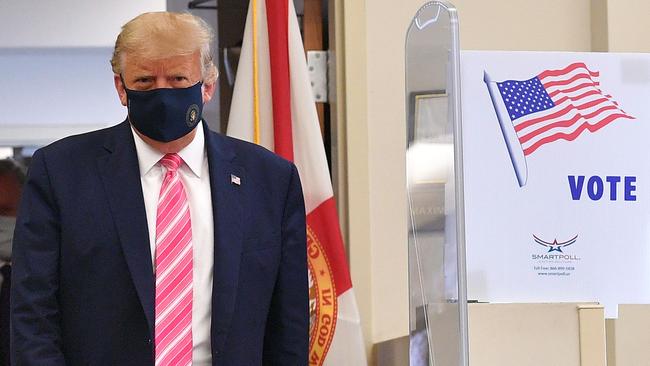
Trump’s woes in the Midwest
Beyond the campaign, what has gone wrong for Mr Trump in the Midwest? One main factor and several minor ones explain his difficulties. The biggest is his mishandling of the coronavirus epidemic — and continuing denial of its seriousness — as the public-health crisis rages again.
On Friday, local time, nearly 84,000 Americans tested positive, a record. Several officials close to Vice-President Mike Pence were declared to have the virus, belying Mr Trump’s talk of “rounding the corner” on the pandemic.
The coming week will almost certainly bring new, dismal records. Hospitals in Wisconsin, one of the worst-affected states in the country, are filling-up with seriously sick patients, and field hospitals have been opened. Daily death tolls from the virus are rising again. In Wisconsin more than 4000 new cases were announced on Sunday and more than 1770 people have died. Perhaps because colder weather arrives first in northern states, much of the Midwest is now being battered more than the rest of the country.
Earlier this year, it was not obvious how the pandemic would affect politics. For voters in smaller towns in Michigan and Wisconsin, for example, illness and deaths in the northern spring were seen as mostly affecting residents of bigger cities, such as Detroit, Chicago or Milwaukee. Republicans, during the spring phase of the pandemic, raged most about lockdowns, closures of churches and businesses, and governors who called for residents to wear masks.
Now that the pandemic has also spread to smaller, suburban and more rural places — more typically where independent and Republican voters live — the mood is shifting. Much of northern Wisconsin, for example, is badly hit. Mr Trump’s apparent disdain for the fate of older voters is damaging him in many rural places.
The pandemic also brings to the fore existing concern about healthcare. In the midterms the issue helped to stir college-educated women in the suburbs, especially, to vote Democrat. As Mr Trump talks of scrapping the Affordable Care Act, cutting health insurance for millions of poorer Americans, while waffling about some unspecific replacement, poorer voters have grown sceptical.

Biden more effective than Clinton
The pandemic is his main problem. But Mr Trump also faces a host of smaller difficulties. One is that Mr Biden, who plays up his working-class roots, is more appealing to Midwesterners than Hillary Clinton ever was. Voters in Wisconsin, in 2016, were unenthusiastic about candidates of both parties. Many stayed home or drifted to third parties. This time Mr Biden, who is backed by moderate Republicans and supporters of Bernie Sanders alike, is widely liked. In reporting trips to Iowa, Indiana, Illinois, Ohio and Wisconsin in the past month, even Republican voters have typically said they feel little animosity to Mr Biden. Charles Franklin, of Marquette University, in Milwaukee, says Mr Biden’s net-favourability in Wisconsin has far outstripped Mr Trump ever since May. This month he enjoys an 11-point lead over the President. That gap looks hard to overcome.

Racial strife
Other problems for Mr Trump include his handling of protests over police violence against African-Americans, and the fallout from the killing of George Floyd in Minneapolis and Breonna Taylor in Louisville, and the shooting of Jacob Blake in Kenosha, all in recent months.
Concern about racial segregation of cities and tension between African-Americans and police has been especially strong in the Midwest this year.
In turn Mr Trump’s efforts to stir up racial antipathy, for example among white suburban voters, have not obviously worked. Instead, he may have stirred up more African-American voters, and young ones of all races, to turn out for Mr Biden.
That could mean the Democrats piling up unusually large tallies of votes in cities such as Milwaukee and Madison in Wisconsin.
Is there some scenario in which Mr Trump’s barnstorming at rallies overcomes these problems in the remaining week of the campaign? It seems improbable. His appeal to non-college-educated white voters in the Midwest may remain as strong as ever, but their share of the electorate has shrunk with every passing year. Higher turnout for African-Americans in cities like Milwaukee and Detroit, as well as college-educated voters in the suburbs, are more likely to defeat Mr Trump in a region that was vital for his success last time around.


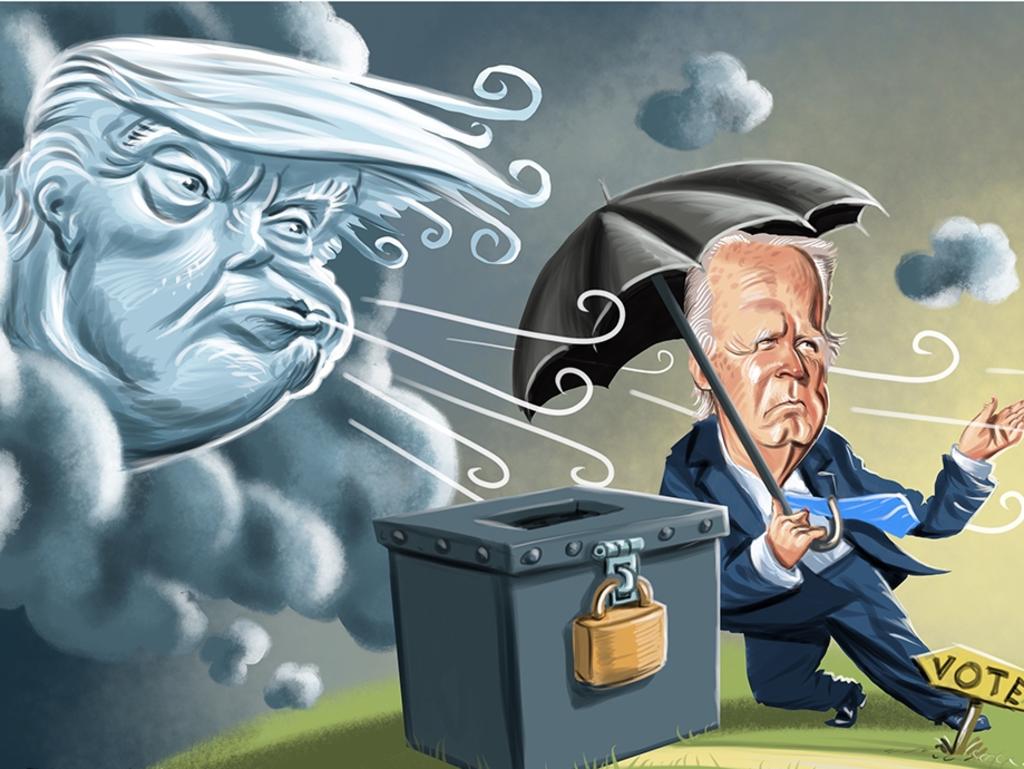
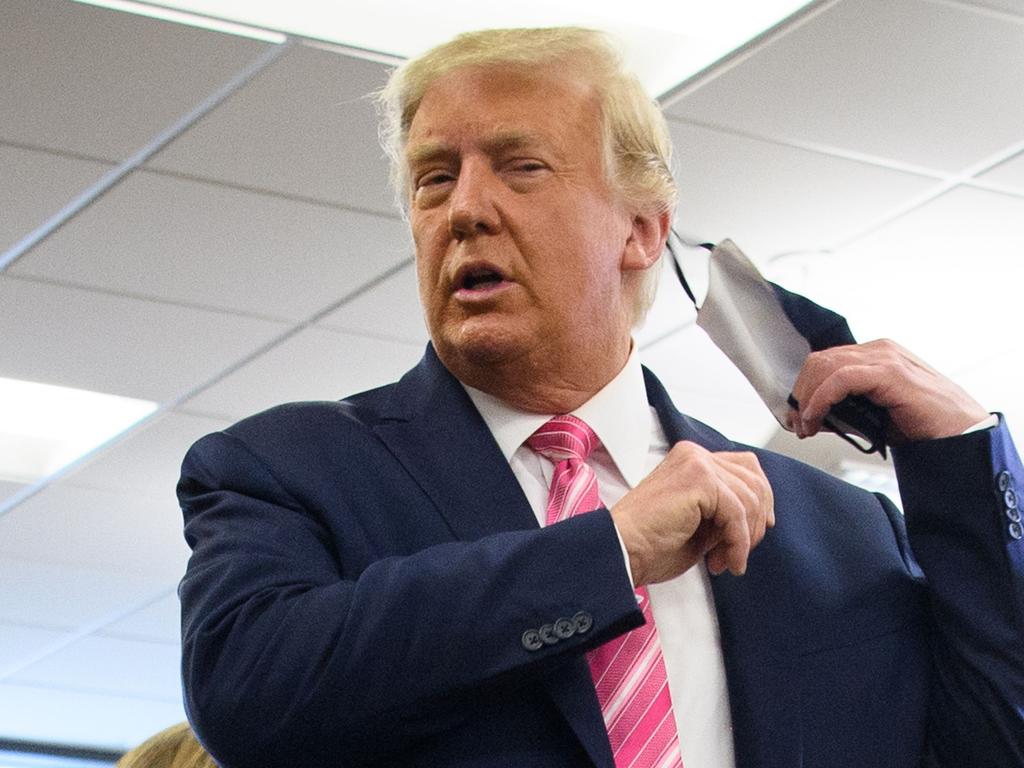

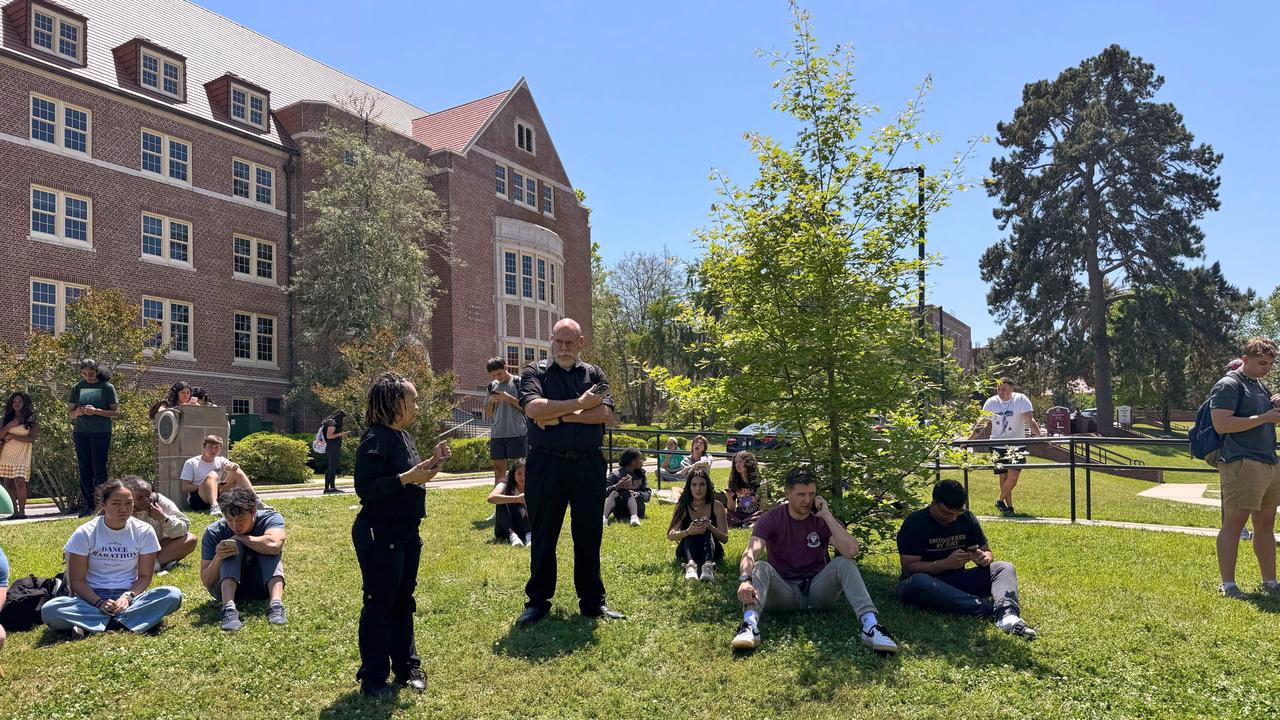
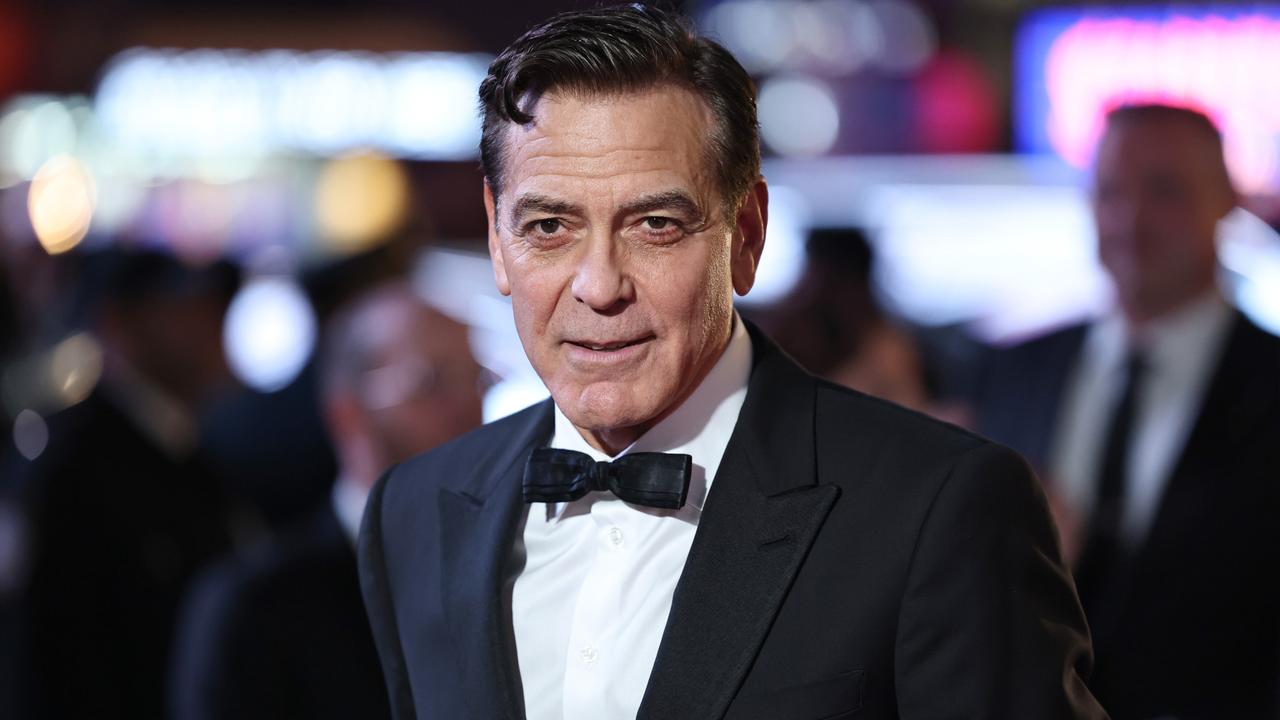
To join the conversation, please log in. Don't have an account? Register
Join the conversation, you are commenting as Logout